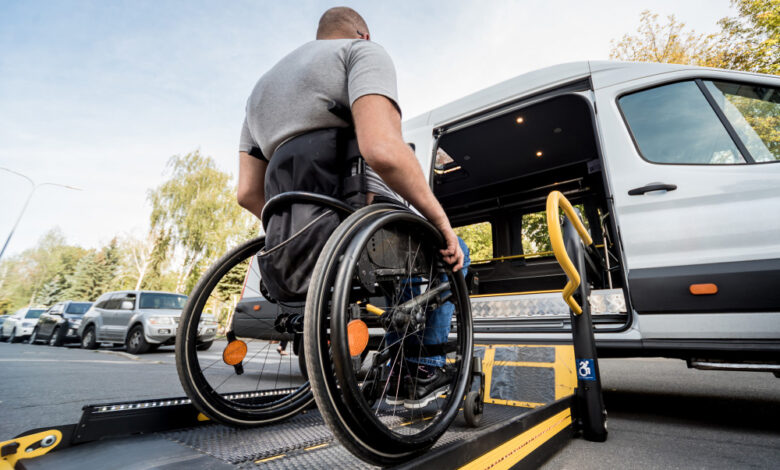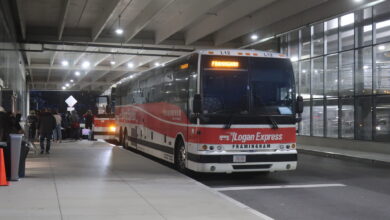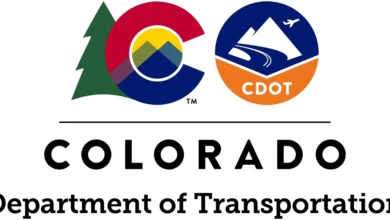Handicapped Transportation Service: Navigating Independence with Dignity

Outline
- Introduction
- Definition of Handicapped Transportation Service
- Importance of Accessible Transportation
- Challenges Faced by the Handicapped
- Limited Accessibility
- Dependence on Others
- Social Isolation
- The Rise of Handicapped Transportation Services
- Historical Perspective
- Evolution of Services
- Key Features of Handicapped Transportation
- Vehicle Accessibility
- Trained Personnel
- Flexible Scheduling
- Benefits of Handicapped Transportation Services
- Independence and Autonomy
- Improved Quality of Life
- Social Inclusion
- Legislation and Regulations
- ADA Compliance
- Government Initiatives
- Types of Handicapped Transportation
- Public Transport Accessibility
- Private Handicapped Transport Services
- Challenges in Implementing Handicapped Transportation Services
- Cost Constraints
- Infrastructure Challenges
- Technology in Handicapped Transportation
- Apps for Scheduling
- Adaptive Vehicle Technology
- Case Studies
- Successful Implementation Stories
- Impact on Communities
- Future Trends in Handicapped Transportation
- Advancements in Technology
- Community Engagement
- How to Choose the Right Handicapped Transportation Service
- Assessing Needs
- Reputation and Reviews
- Promoting Awareness
- Public Campaigns
- Advocacy for Accessibility
- Testimonials
- Personal Experiences
- Positive Outcomes
- Conclusion
- Recap of Importance
- Call to Action
Introduction
Handicapped transportation service plays a crucial role in ensuring that individuals with mobility challenges can navigate the world with independence and dignity. In this article, we’ll explore the significance of accessible transportation and the transformative impact it has on the lives of those facing mobility constraints.
Challenges Faced by the Handicapped
Limited Accessibility
One of the primary hurdles faced by handicapped individuals is the lack of accessible transportation options. Many public and private transport services are not designed to accommodate those with mobility challenges, creating barriers to their daily activities.
Dependence on Others
Without dedicated handicapped transportation services, individuals often find themselves dependent on others for commuting. This reliance can lead to feelings of helplessness and restrict personal freedom.
Social Isolation
Limited transportation options contribute to social isolation among handicapped individuals. The inability to attend social gatherings or engage in community activities can have profound effects on mental well-being.
The Rise of Handicapped Transportation Services
Historical Perspective
Over the years, societal awareness of the challenges faced by handicapped individuals has grown. This awareness has led to the development of dedicated transportation services tailored to meet their unique needs.
Evolution of Services
Handicapped transportation services have evolved from basic accommodations to comprehensive, specialized services. This evolution reflects a commitment to inclusivity and ensuring that no one is left behind.
Key Features of Handicapped Transportation
Vehicle Accessibility
Handicapped transportation services prioritize vehicles equipped with ramps, lifts, and other features to ensure easy boarding and disembarking for individuals with mobility aids.
Trained Personnel
Service providers often employ trained personnel to assist handicapped passengers, providing necessary support and ensuring a comfortable and safe journey.
Flexible Scheduling
Handicapped transportation services typically offer flexible scheduling to accommodate the diverse needs and routines of their users.
Benefits of Handicapped Transportation Services
Independence and Autonomy
Accessible transportation empowers handicapped individuals, offering them the freedom to travel independently and engage in various activities without relying on others.
Improved Quality of Life
The ability to access transportation services tailored to their needs enhances the overall quality of life for handicapped individuals, enabling them to participate more fully in society.
Social Inclusion
Handicapped transportation services contribute significantly to social inclusion by facilitating participation in community events, gatherings, and recreational activities.
Legislation and Regulations
ADA Compliance
The Americans with Disabilities Act (ADA) sets standards for accessible transportation, ensuring that public and private services adhere to regulations that promote inclusivity.
Government Initiatives
Governments worldwide are actively involved in promoting handicapped transportation through initiatives that support infrastructure development and service enhancement.
Types of Handicapped Transportation
Public Transport Accessibility
Public transportation systems are gradually improving accessibility with features like low-floor buses, ramps, and designated spaces for wheelchairs.
Private Handicapped Transport Services
Private companies specializing in handicapped transportation provide door-to-door services, offering personalized solutions for individuals with specific mobility requirements.
Challenges in Implementing Handicapped Transportation Services
Cost Constraints
Implementing and maintaining handicapped transportation services can be costly, presenting a challenge for service providers and communities seeking to enhance accessibility.
Infrastructure Challenges
Limited infrastructure, such as poorly designed sidewalks and inadequate ramps, can impede the seamless operation of handicapped transportation services.
Technology in Handicapped Transportation
Apps for Scheduling
Technological advancements have led to the development of apps that allow users to schedule handicapped transportation services conveniently.
Adaptive Vehicle Technology
Innovations in vehicle technology, such as adaptive controls and modified vehicles, contribute to making transportation more accessible for individuals with diverse mobility needs.
Case Studies
Successful Implementation Stories
Examining successful case studies highlights the positive impact handicapped transportation services can have on individuals and communities.
Impact on Communities
Communities benefit from improved accessibility, fostering inclusivity and diversity, and creating a more supportive environment for everyone.
Future Trends in Handicapped Transportation
Advancements in Technology
Continued advancements in technology are expected to further enhance the accessibility and efficiency of handicapped transportation services.
Community Engagement
Increased community engagement and awareness campaigns are crucial for driving positive change and promoting inclusivity in transportation.
How to Choose the Right Handicapped Transportation Service
Assessing Needs
Individuals and families should assess their specific needs when choosing a handicapped transportation service, considering factors such as mobility aids, scheduling requirements, and service reputation.
Reputation and Reviews
Checking reviews and the reputation of service providers ensures selecting a reliable and reputable handicapped transportation service that meets the unique needs of users.
Promoting Awareness
Public Campaigns
Public awareness campaigns play a vital role in promoting understanding and empathy towards the challenges faced by handicapped individuals in transportation.
Advocacy for Accessibility
Advocacy efforts are essential for driving policy changes and ensuring that all transportation services prioritize accessibility for individuals with mobility challenges.
Testimonials
Personal Experiences
Hearing firsthand accounts from individuals benefiting from handicapped transportation services provides valuable insights into the positive impact on their lives.
Positive Outcomes
Stories of increased independence, improved well-being, and enhanced social connections showcase the positive outcomes of accessible transportation.
Conclusion
In conclusion, handicapped transportation services are a cornerstone for fostering inclusivity and empowerment. By overcoming challenges, leveraging technology, and advocating for accessibility, these services contribute to creating a more equitable and supportive society.



